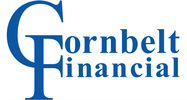|
When it comes to philanthropy, many individuals are discovering a powerful strategy that not only supports charitable causes but also unlocks significant tax advantages. The key lies in donating appreciated assets, such as financial assets, artwork, antiques, classic cars, etc. and enjoying a deduction based on their current fair market value rather than their original cost. This approach provides a unique opportunity to make a meaningful impact on charitable organizations while optimizing your financial portfolio.
Understanding Appreciated Assets: Appreciated assets are investments or possessions that have increased in value over time. This appreciation can result from various factors, such as market conditions, rarity, or historical significance. Common examples include real estate, stocks, collectibles, and valuable personal property like art or classic cars. The Tax Advantage of Donating Appreciated Assets: One of the significant advantages of donating appreciated assets is the ability to deduct their current fair market value on your tax return, provided you have owned the asset for more than a year. This differs from selling the asset, where capital gains tax may apply. Example Scenario: Consider a scenario where you own a valuable piece of art that you purchased for $10,000 several years ago. Over time, the artwork's value has appreciated, and it is now worth $50,000. If you were to sell the artwork, you would incur capital gains tax on the $40,000 appreciation. However, by choosing to donate the artwork to a qualified charitable organization, you can potentially receive a tax deduction for the full $50,000 fair market value. This strategy not only supports a cause you care about but also minimizes your tax liability. Considerations Before Donating:
Consult with Professionals: As with any financial strategy, it's essential to consult with financial advisors, tax professionals, and appraisers who specialize in charitable giving and the valuation of specific assets. Cornbelt Financial is here to help with any of these donation related questions. We can provide tailored guidance based on your unique circumstances. By exploring the option of donating appreciated assets, you can align your philanthropic goals with smart financial planning, ultimately creating a win-win situation for both you and the charitable causes you hold dear. Mastering Advanced Charitable Giving: A Guide to DAFs, CRTs, and Foundations for Maximum Impact1/11/2024
Employing sophisticated charitable giving techniques can serve as a strategic means to optimize your tax advantages. Presented here is a high-level overview of advanced charitable giving strategies, accompanied by an analysis of scenarios where each method may be most beneficial for individuals seeking to enhance their financial position through philanthropy.
1. Donor Advised Funds (DAF) A Donor Advised Fund (DAF) is a charitable giving vehicle that allows individuals to make contributions to a fund, receive an immediate tax deduction, and recommend grants from the fund over time. How it works: You contribute assets (cash, securities, etc.) to the fund, receive a tax deduction for the contribution, and then advise the fund on how to distribute grants to charitable organizations. When it makes sense: DAFs are beneficial for individuals who want to receive an immediate tax deduction for a charitable contribution but may want to take their time to decide which specific charities to support. 2. Charitable Remainder Trusts (CRT) A Charitable Remainder Trust (CRT) is an irrevocable trust that provides an income stream to the donor or beneficiaries for a specified period, after which the remaining assets go to a charitable organization. How it works: You transfer assets into the trust, and beneficiaries receive a percentage of the trust's value for a set number of years or for their lifetime. After the trust term, the remaining assets go to a charitable organization. When it makes sense: CRTs can be suitable for individuals with highly appreciated assets who want to receive an income stream, avoid capital gains tax on the sale of the assets, and support a charitable cause. 3. Private or Public Foundations Private Foundations and Public Foundations are types of tax-exempt organizations that operate for charitable, educational, or other philanthropic purposes. How they work: Private Foundations are typically funded by an individual, family, or corporation, and they have more control over their grant-making. Public Foundations are funded by the public and often engage in a broader range of activities. When it makes sense: Establishing a foundation may be suitable for individuals or families with significant wealth who want to have a more hands-on approach to their charitable giving and create a lasting legacy. Each of these advanced charitable giving strategies involves complex legal and financial considerations. Consulting with legal and financial professionals who specialize in charitable giving is crucial to understand the implications for your specific situation. Your choice of strategy may also depend on factors such as the size of your assets, your charitable goals, and your desire for ongoing involvement in the management of charitable funds. Reach out to a Cornbelt Financial representative today to learn more. As we venture into a new tax year, optimizing your financial strategy can significantly impact the amount you pay in income taxes. Here are the top 5 strategies to help you reduce taxable income and keep more money in your pocket come tax season:
1. Maximize Retirement Contributions: Contribute the maximum allowable amount to your retirement accounts, such as 401(k)s and IRAs. These contributions not only secure your financial future but also reduce your taxable income. Do note, there are income and eligibility limits and phaseouts to consider before making these contributions. 2. Leverage Health Savings Accounts (HSAs): If you have a high-deductible health plan, consider contributing to an HSA. Your contributions are tax-deductible, and withdrawals for qualified medical expenses are tax-free, providing a double tax benefit. 3. Explore Itemizing Deductions: Itemizing deductions can be a powerful tool. Deductible expenses may include medical expenses & mileage in excess of 7.5% of your Adjusted Gross Income, mortgage interest, state and local taxes, charitable contributions, and mileage. Analyze whether itemizing is more advantageous than taking the standard deduction. 4. Make Charitable Donations: Boost your philanthropic efforts while reducing your tax liability by making charitable donations. Contributions to qualified charities are tax-deductible and can make a meaningful impact on both your community and your tax return. There are many strategies available within this space. Reach out to Cornbelt Financial to find out the best strategies to fit your specific needs. 5. Take Advantage of Tax Credits: Investigate tax credits available for specific actions. For instance, consider solar and alternative fuel vehicle tax credits. Installing solar panels at home or purchasing an electric vehicle can not only benefit the environment but also provide valuable tax credits. Bonus Tip: Education Credits and Tuition Deductions: If you're pursuing higher education or have eligible dependents in college, explore education credits like the American Opportunity Credit or the Lifetime Learning Credit. Additionally, you may qualify for deductions related to tuition, student loan interest, or contributions to state-sponsored education plans such as a 529 plan. Implementing these strategies can help position you for a more tax-efficient year. However, tax laws are complex and subject to change often, so it's advisable to consult with a tax professional like Cornbelt Financial to tailor these general strategies to your unique financial situation. By taking proactive steps and staying informed about available deductions and credits, you can navigate the tax landscape strategically, reduce your taxable income, and ultimately pay less in taxes for the year 2024. |
AuthorAdam Carr, MBA, EA Archives
June 2024
Categories
All
|




 RSS Feed
RSS Feed

